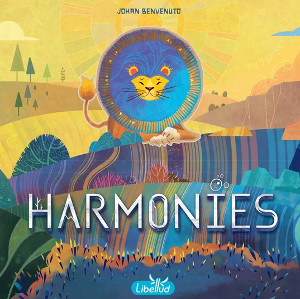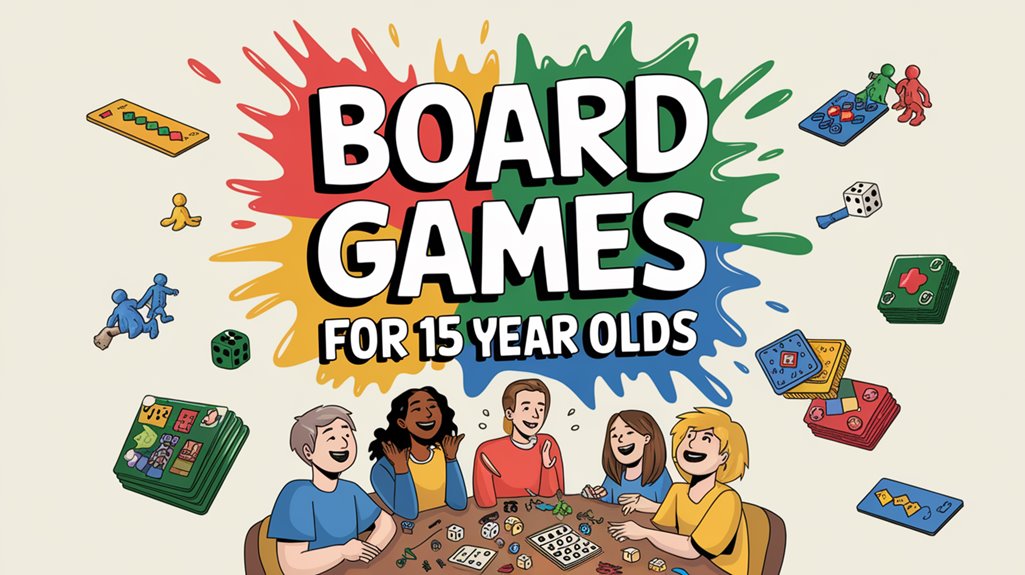Board game enthusiasts often search for that perfect balance between accessibility and strategic depth. Harmonies steps into this space with confidence, offering a visually striking tile-placement experience that appeals to both casual and experienced players. The game’s elegant mechanics mask underlying complexity, while its nature-themed artwork immediately draws participants into its world. The contrast between its excellent multiplayer dynamics and somewhat limited solo experience raises important questions about what makes a truly complete game design. What exactly makes this distinction work—or not work?
Key Takeaways
- Harmonies is a visually appealing tile-placement game with high-quality wooden components and artwork by Maëva da Silva.
- Gameplay features strategic terrain tile drafting with various scoring conditions across different token types.
- The 20-30 minute gameplay experience balances accessibility for newcomers while offering depth for experienced players.
- Multiplayer mode excels with competitive interactions, while the solo experience feels more mechanical and limited.
- The game rewards thoughtful planning through Animal Cards that establish pattern-building objectives for optimal scoring.
Harmonies

Game Components and Visual Appeal
A treasure trove of tactile delights awaits players who unbox Harmonies, immediately signaling the care Libellud has invested in the game’s physical presentation. The chunky wooden Terrain Tokens and Animal Cubes offer a satisfying tactile dimension that boosts the gameplay experience beyond mere strategy.
Maëva da Silva’s beautifully illustrated artwork infuses the Player Boards and components with playful, atmospheric designs that create an immersive miniature world. The thoughtful organization extends to storage, with a built-in “shelter” that simplifies effortless setup and cleanup.
The rulebook exemplifies accessibility through its clear art and straightforward instructions, making the game approachable for newcomers. This harmonious integration of vibrant colors and thematic elements doesn’t just improve visual appeal—it transforms the tabletop into an evocative ecosystem that players can manipulate and investigate.
Setup and Learning Curve
Harmonies impresses with its remarkably efficient setup process, requiring merely minutes of preparation for a satisfying 20-30 minute gameplay experience. The rulebook stands as a paragon of board game instruction design, featuring intuitive layouts and illustrative examples that flatten the learning curve for newcomers. Players quickly grasp the elegantly balanced turn structure—one mandatory action plus two optional moves—while the included Player Aids provide immediate scoring reference, allowing strategic depth to emerge organically from simple mechanics.
Quick Play Preparation
Three minutes is all players need to transform a quiet tabletop into the vibrant world of Harmonies, making this game an exceptional choice for those who value efficiency in their gaming sessions. The quick play preparation begins with each participant selecting either side of their Player Board, immediately establishing their strategic direction. Players then decide whether to incorporate advanced Spirit Animals for added complexity.
The central drafting mechanism takes shape as three discs are placed on each depot from the bag, while five Animal Cards create an accessible market of choices. This streamlined setup, coupled with the rulebook’s clear visual aids and intuitive instructions, guarantees board gaming enthusiasts can quickly grasp the straightforward turn structure: one mandatory drafting action plus two optional moves. Harmonies thus masterfully balances accessibility with strategic depth from the very beginning.
Clear Accessible Rulebook
Masterfully crafted for immediate engagement, the Harmonies rulebook stands as a paragon of clarity in board game instruction design. The combination of straightforward language and illustrative art creates an intuitive learning experience, allowing players to grasp core mechanics without frustration.
The game’s quick setup complements this accessibility, with players transitioning from box to gameplay in just 20-30 minutes. For those concerned about scoring, detailed Player Aid cards clarify how points at the end are calculated, eliminating confusion during the critical final tallying.
Harmonies excels in scalable complexity—players can select basic or advanced player boards and optionally integrate Spirit Animals for additional strategic depth. This thoughtful approach guarantees newcomers aren’t overwhelmed while providing veterans with satisfying decision spaces, all without sacrificing the rulebook’s exceptional clarity.
Simple Yet Strategic Rules
Elegance defines Harmonies’ core gameplay system, striking a remarkable balance between accessibility and tactical depth. The game’s brilliance lies in its straightforward setup process—taking mere minutes before players can immerse themselves in its strategic terrain.
The turn structure exemplifies thoughtful design: one mandatory action paired with two optional choices creates meaningful decisions without overwhelming complexity. This simple yet strategic rules framework guarantees that even younger players can grasp the fundamentals while experienced gamers uncover subtle tactical paths to victory.
Transparent scoring mechanics, clearly outlined on Player Aids, eliminate confusion about how points accumulate toward the end of the game. Harmonies positions itself perfectly as a Family Game for Kids aged 10 and up, offering an experience that scales naturally with player expertise—accessible enough for newcomers while remaining engaging for strategy enthusiasts.
Core Gameplay Mechanics
Drafting tiles sits at the heart of Harmonies’ elegant design, where players select three tiles from a communal board each turn to construct their personal scenery. This open drafting system creates meaningful decisions as each Player balances immediate needs against long-term strategy. The various terrain types—water, fields, buildings, trees, and mountains—must be thoughtfully arranged to maximize scoring potential.
Pattern Building emerges as players strategically position tiles to satisfy the requirements on animal cards. The true genius lies in how these cards incentivize specific arrangements while creating natural tension between competing objectives. Players must optimize their limited board space, determining whether to expand geography broadly or focus on completing animal habitats. This spatial puzzle, with its interlocking scoring systems, guarantees every placement decision carries weight in the evolving environment.
Scoring System and Strategy
While the serene vistas of Harmonies may appear peaceful, beneath this tranquil exterior lies a subtle scoring system that drives intense strategic decision-making. The game rewards thoughtful placement of Terrain Tokens, with each color offering unique scoring paths.
| Token Type | Scoring Condition | Strategy | Points Potential |
|---|---|---|---|
| Grey Tokens | Must be chained | Create networks | Variable |
| Red Tokens | Requires stacking | Vertical planning | High risk/reward |
| Animal Cards | Match patterns | Plan tile placement | End-game bonus |
| Spirit Cards | Special conditions | Occupies Animal slot | Strategic depth |
Players must balance immediate token placement with long-term Animal Card fulfillment. Strategic stacking of red tokens creates valuable scoring opportunities, while carefully transferring Animal Cubes to matching terrain discs completes objectives. The true mastery of Harmonies emerges when players navigate these interconnected scoring mechanisms to craft their own perfect ecosystem.
Solo Mode Experience
Harmonies’ solo mode presents a more streamlined experience with a reduced marketplace of Animal Cards, which noticeably impacts the dynamic nature of gameplay compared to its multiplayer counterpart. The core mechanics of drafting, token placement, and objective fulfillment remain intact, yet the absence of competitive tension results in a significantly less engaging strategic experience for solitary players. While the reviewer has not thoroughly tested this mode, the preliminary rating of 7.3 versus the multiplayer’s 8.3 reflects potential missed opportunities to adapt the game’s fundamentally social design elements for solo engagement.
Playing Alone
The solo experience of Harmonies presents a noticeable departure from its multiplayer counterpart, offering a more contained journey through its enchanting world of animal harmonization. While retaining the core Poetic Gameplay elements, the solo mode features a reduced market of Animal Cards, resulting in fewer strategic options and dynamic interactions.
Players engaging with this Fun Family Game alone follow similar drafting mechanics and scoring objectives as the multiplayer version, but without the competitive element driving decisions. Though the reviewer hasn’t fully investigated this aspect, preliminary observations suggest the solo mode lacks the strategic depth and thrill that defines group play. In spite of these limitations, solitary sessions still deliver the game’s visual charm and fundamental mechanics, allowing players to enjoy its aesthetic appeal while seeking personal scoring achievements in a more contemplative, freedom-oriented experience.
Missed Opportunities
Beneath the polished veneer of Harmonies’ solo experience lies a collection of missed opportunities that prevent it from achieving the same heights as its multiplayer counterpart. The significantly smaller Animal Card market in solo mode restricts the dynamic gameplay that makes the multiplayer version shine, resulting in a remarkably lower satisfaction rating (7.3 versus 8.3).
The limited market refresh option available in solo play creates tactical stagnation, reducing the strategic depth that board game enthusiasts crave. Without the competitive interaction and tension that defines multiplayer gameplay, the solo experience feels somewhat bland and mechanical. While the reviewer has yet to fully investigate this mode, the disparity in ratings suggests fundamental design limitations rather than mere stylistic differences. Harmonies solo mode represents a functional but ultimately diminished version of its otherwise vibrant ecosystem.


